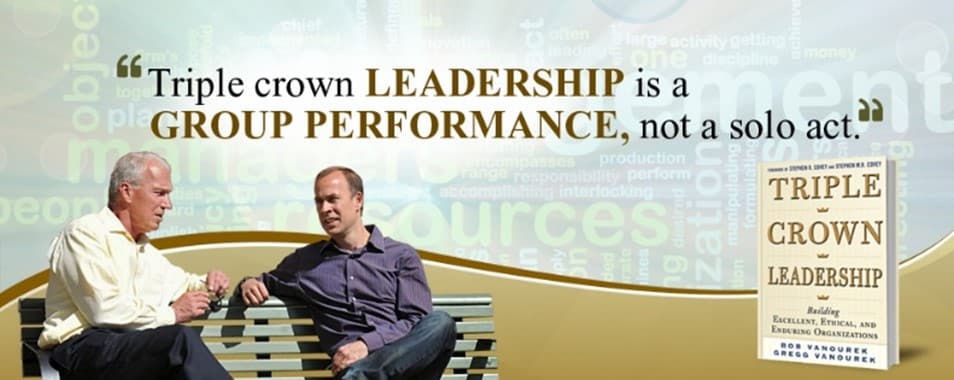Article Summary:
Love-based leadership can be transformative for people and organizations. Here’s how leaders can bring it about in their workplace.
+++
Our previous article, “The Case for Love-Based Leadership,” addressed the transformational power and many benefits of love-based leadership.
Leading with love entails connecting, caring, showing compassion, recognizing, appreciating, giving, forgiving, having fun, and more. It’s closely tied to what researchers Sigal Barsade and Olivia O’Neill described as “a culture of companionate love—based on the degree to which employees express affection, caring, compassion, and tenderness towards each other.”
Given the power of love-based leadership, with all its benefits, the question arises, how to go about it?
How can we lead with love?

Leadership Derailers Assessment
Take this assessment to identify what’s inhibiting your leadership effectiveness. It will help you develop self-awareness and identify ways to improve your leadership.
How to Lead with Love: 30 Practices
How to practice love-based leadership? Below are the actions you can take to practice love-based leadership in your workplace. Consider using it as a checklist so you can see in which areas you’re thriving and in which areas you need work.
- Schedule lots of one-on-one time with colleagues and get to know them personally.
- Show you genuinely care about your colleagues (including their health, wellbeing, and family).
- Practice robust and consistent self-care and encourage your colleagues to do so as well.
- Be authentic, including “being yourself” and “being the person you were created to be,” as Bill George (author of Authentic Leadership) recommends.
- Be respectful. Show others respect and earn respect from others.
- Demonstrate humility, recognizing that we have no special importance that makes us better than others—avoiding the classic leadership trap of ego and pride.
- Be vulnerable, sharing personal stories with colleagues and asking them to do the same if they’re comfortable doing so.
- Show compassion, including sympathy and sorrow for people when they face misfortune, along with a desire to help
- Develop and appreciate relational skills to build collaboration and connections.
- Recall that we’re all interconnected and interdependent.
- Focus on commonalities and shared commitments while applauding differences and recognizing their value (e.g., in innovation and decision-making).
- Commit to leading with character, integrity, and honesty—and to honoring your personal values and the organization’s shared values.
- Demonstrate your commitment to people by believing in them, trusting them, and having their backs.
- Listen deeply when your colleagues are talking to you.
- Maintain open and honest communication.
- Treat people with love and respect always, even when things are strained and problematic.
- Apologize when you make mistakes or disrespect someone.
- Persuade people through honest dialogue and explain your decisions and actions instead of just issuing orders and expecting people to follow them.
- Help colleagues build meaning into their work and feel a sense of significance.
- Confront difficult issues with genuine care and concern.
- Be patient and kind with people, recognizing that you may not be aware of all their challenges.
- Show workers that you want them to succeed and will help them do so.
- Help people be their best.
- Mentor or coach colleagues, creating a safe space for reflection and dialogue, asking thought-provoking questions, raising their sights, unlocking their potential, and holding them accountable for their commitments.
- Forgive your colleagues for their mistakes and grant people “amnesty” when necessary so you can move forward together.
- Create a sense of family or community in your workplace by caring for and connecting people deeply.
- Arrange team-building days with lots of time for connection, play, fun, and relaxation.
- Create a culture of psychological safety, a shared sense that the team is safe for interpersonal risk-taking, including open and frank discussions and disagreement without reprisal.
- Show active and authentic appreciation of people for their efforts and accomplishments. Write personal thank-you notes to workers, customers, and partners.
- Show pride in your collective accomplishments and celebrate them.
Triple Crown Leaders Lead with Love
In our book, Triple Crown Leadership: Building Excellent, Ethical, and Enduring Organizations, we defined five advanced practices for how to build excellent, ethical, and enduring organizations. Each of these practices overlaps with love-based leadership. We address the five practices and their overlaps in turn below.
1. Head and Heart
In our triple crown leadership framework, leading with head and heart means recruiting for, developing, and rewarding not just head characteristics like skills and expertise but also heart ones such as character, emotional intelligence, resilience, and courage. Head skills are critical, but they’re only the entry bar. Priority goes to heart qualities. With first-rate heart and head qualities, people can bond. They can be themselves and form deep relationships because they can admire and appreciate each other’s heart and head qualities.
2. The Colors
The “colors” are the shared purpose, values, and vision of an organization. Triple crown leaders collaboratively set an inspiring shared purpose, values, and vision and then bring them to life to build a culture of character in the organization. The purpose grounds the people in the organization about “why” they exist. The values guide their behavior. The vision inspires them to work toward a common conception of what success looks like. In short, the purpose grounds, the values guide, and the vision inspires. The colors allow people to bring their authentic selves to work and part of something bigger than themselves. People bond around these shared commitments.
“A purpose organized around love and care creates a powerful, vital force field throughout an organization.
It is in harmony with the deepest essence of what it means to be human.”
-Raj Sisodia and Michael J. Gelb, The Healing Organization
3. Steel and Velvet
Leading with what we call “steel and velvet” means getting beyond your natural leadership style, flexing between the hard and soft edges of leadership, depending on the people and situation, but always anchored in the shared values. Steel and velvet are the hard and soft edges of leadership. Steel sets the boundaries of what’s acceptable behavior and what’s not. It’s the tough love that says we’ll achieve our goals but never unethically. Velvet encompasses collaboration, relationships, and using respectful persuasion rather than position power. By flexing between steel and velvet, triple crown leaders are showing great care both for their colleagues and for the organization itself.
4. Stewards
Triple crown organizations unleash their people, expecting everyone to be a steward of the colors and culture of the organization. All workers, regardless of title, are expected to step outside their traditional roles and challenge leaders and colleagues when they sense something is being done that may violate their shared values. Stewards protect and defend their organization and colleagues. The result is mutual respect and sometimes even admiration among workers.
5. Alignment
Triple crown leaders collaboratively align the organization up, down, and around to reach a state of peak performance. Our alignment model is a ten-step process that helps everyone in the organization achieve clarity and coherence. It communicates direction and strategy and clarifies everyone’s role. It provides tools for people to work together collaboratively. An aligned, triple-crown organization can achieve a state of “flow.” Once experienced, few ever want to work in a fear-based organization.

Alignment Scorecard
When organizations aren’t aligned, it can reduce performance dramatically and cause frustration and dysfunction. With this Alignment Scorecard, you can assess your organization’s level of alignment and make plans for improving it.
Conclusion
Love-based leadership can be powerful and transformative, especially when it’s given time to breathe, expand throughout an organization, capture hearts, and withstand organizational challenges. As shown above, there are many actions you can take to practice and instill love-based leadership. The key is to get started with a few key actions and continue building momentum, improving as you go and learning from your mistakes.
Wishing you well with it.
–Gregg and Bob Vanourek (son and father)

Reflection Questions
- Are you leading with love?
- How are you doing on the checklist above?
- What’s going well?
- What do you need to work on?
- How will you get and give feedback on this?
- What will you do to continue getting better at the practice of love-based leadership?
Tools for You
- Leadership Derailers Assessment to help you identify what’s inhibiting your leadership effectiveness
- Personal Values Exercise to help you determine and clarify what’s most important to you
- Alignment Scorecard to help you assess your organization’s level of alignment

Personal Values Exercise
Complete this exercise to identify your personal values. It will help you develop self-awareness, including clarity about what’s most important to you in life and work, and serve as a safe harbor for you to return to when things are tough.
Related Articles
- “The Case for Love-Based Leadership”
- “Love as a Leadership Imperative”
- “Tribute to General Jack Chain—An Extraordinary Leader”
Books on Love-Based Leadership
- John Mackey, Steve McIntosh, and Carter Phipps, Conscious Leadership
- Raj Sisodia and Michael J. Gelb, The Healing Organization
- Dr. Maria Church, Love-Based Leadership
- Joel Manby, Love Works
- Tim Sanders, Love is the Killer App
- James Autry, Love and Profit: The Art of Caring Leadership
- John Hope Bryant, Love Leadership
- Bob Chapman and Raj Sisodia, Everybody Matters
- Arthur C. Brooks, Love Your Enemies
The Healing Organization Oath
Place your left hand on your heart and raise your right hand and proclaim.
- Primum non nocere (First do no harm). I will operate my business in a way that causes no harm to others or to the Earth.
- Malus eradicare (Root out evil). I will never enable or collude with abuse or exploitation. I will be an everyday hero who stands up for fairness, truth, beauty, integrity, and basic goodness.
- Amor vincit omnia (Love conquers all). I will operate from love. I will measure success by the fulfillment, abundance, and joy I generate for others.
(Source: Raj Sisodia and Michael J. Gelb, The Healing Organization)
Postscript: Quotations
- “Great leaders genuinely care for and love the people they lead more than they love leading itself.” -Rick Warren, pastor and author
- “Leadership is about falling in love with the people you serve and the people falling in love with you.” -Joyce Banda, former president of Malawi
- “You’re in business to spread love…. The key to a successful career is realizing that it’s not separate from the rest of your life, but is rather an extension of your most basic self. And your most basic self is love.” -Marianne Williamson, A Return to Love
- “To gain success a person will need high EQ; if you don’t want to lose quickly you will need a high IQ, and if you want to be respected you need high LQ—the IQ of love.” -Jack Ma, Chinese entrepreneur
- “There is a world of difference between a leadership that is based on love and respect, and one that is based on fear.” -Mohammed bin Rashid Al Maktoum, author and Prime Minister, United Arab Emirates
- “…candor comes from love. The Bible says, “Speak the truth in love.” It couldn’t be said better. Real candor is expressing the unarguable truth from love. When you develop a mastery of candor, you speak the unarguable truth to all relevant parties with thoughtfulness and kindness. Speaking from love is not a license to withhold or sugarcoat our unarguable truth, because we don’t want to ‘hurt someone’s feelings.’ … Rather, speaking from love asks this question: ‘How do I say all my truth in the most loving way possible?’” -Jim Dethmer, Diana Chapman, and Kaley Warner Klemp, The 15 Commitments of Conscious Leadership
- “…resist the worldly formula of misery, which is to use people and love things. Instead, remember your core values and live by the true formula: Love people and use things.” -Arthur C. Brooks
- “Braggarts build themselves up, jealous people tear others down, but only loving people build others up.” -Alexander Strauch, Leading with Love

Triple Crown Leadership Newsletter
Join our community. Sign up now and get our monthly inspirations (new articles, announcements, opportunities, resources, and more). Welcome!
+++++++++++++++++++++++
Gregg Vanourek and Bob Vanourek are leadership practitioners, teachers, and award-winning authors (and son and father). They are co-authors of Triple Crown Leadership: Building Excellent, Ethical, and Enduring Organizations, a winner of the International Book Awards. Check out their Leadership Derailers Assessment or get their monthly newsletter. If you found value in this, please forward it to a friend. Every little bit helps!


